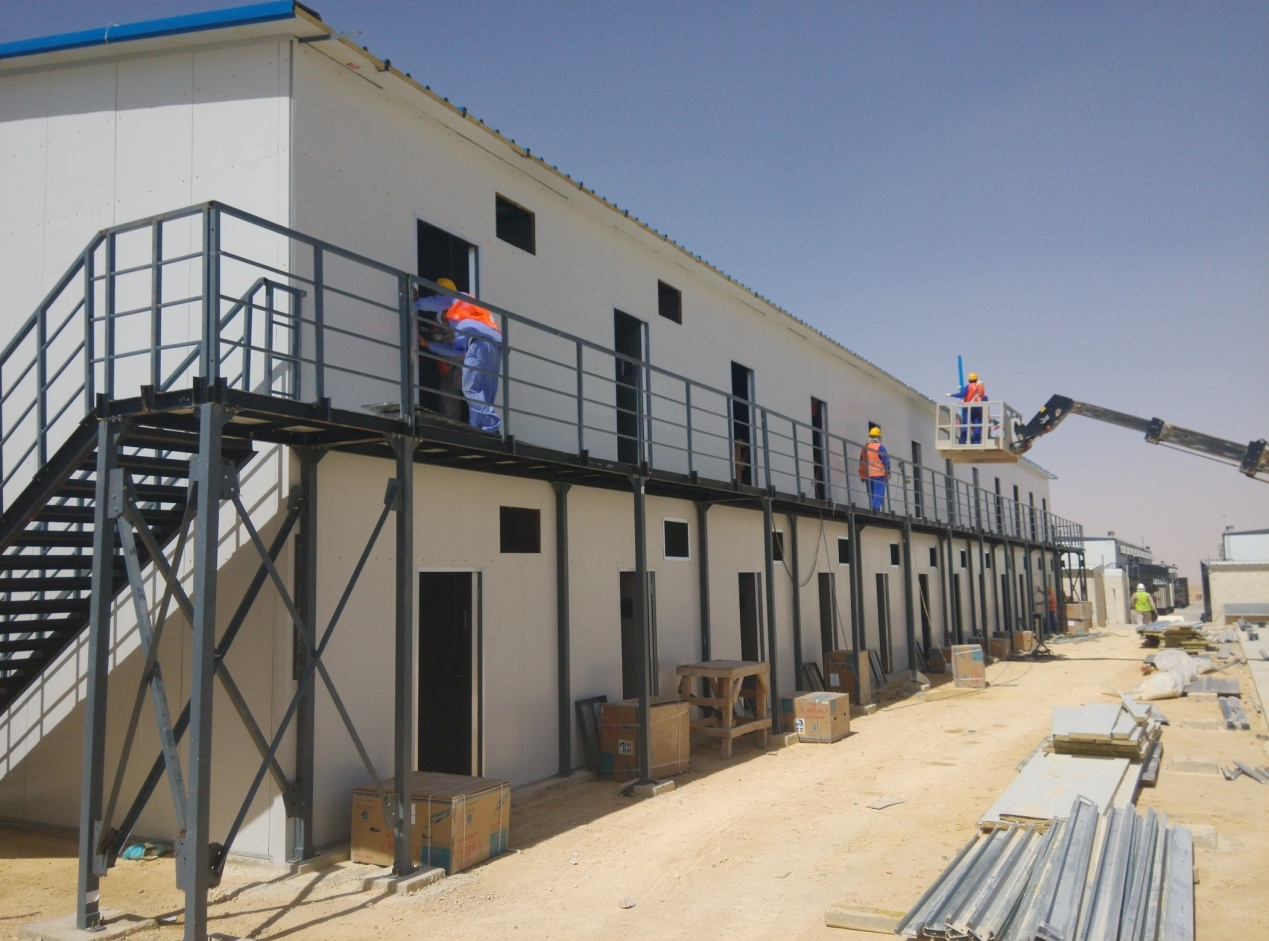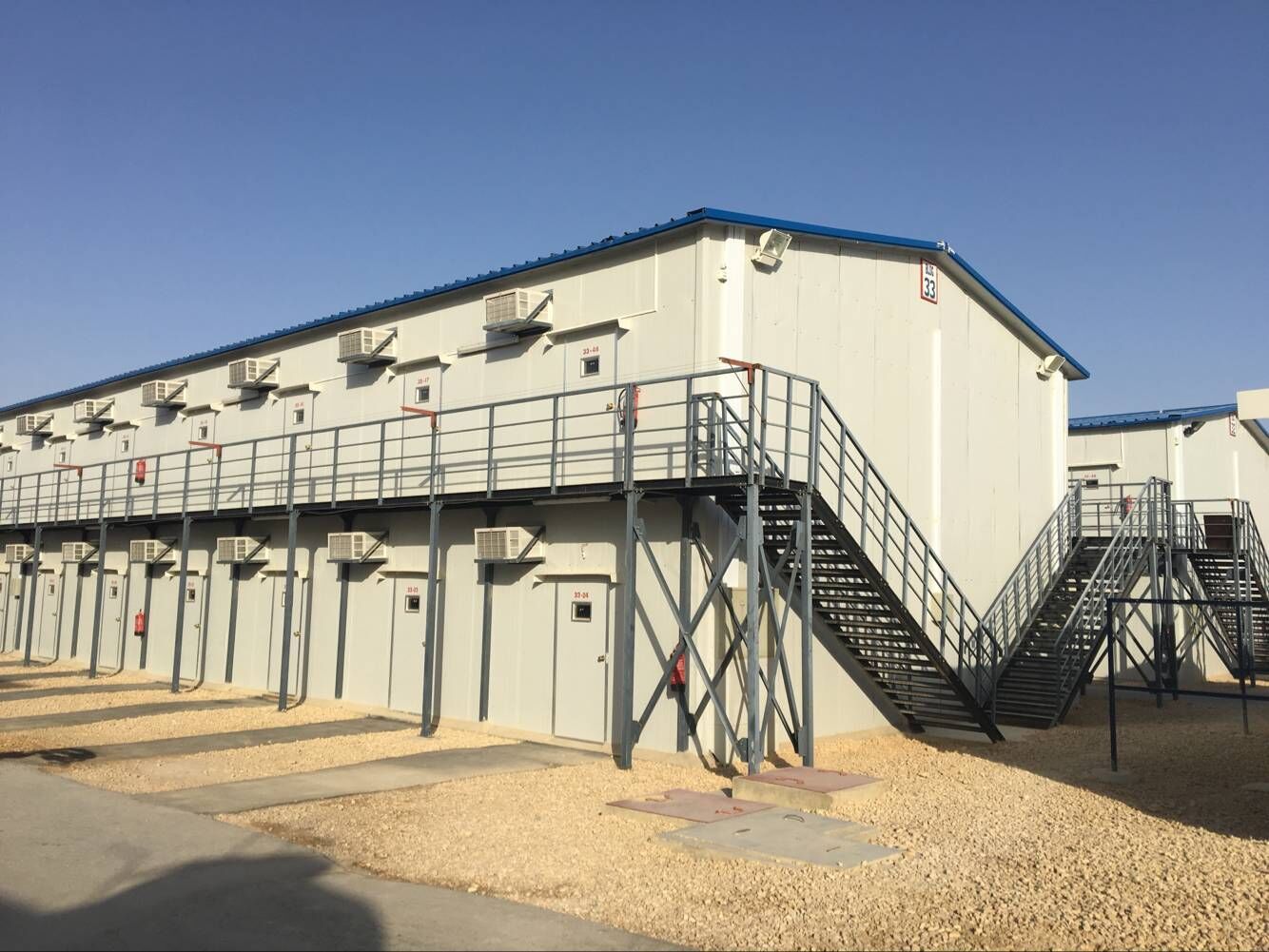Tel: 0086-532-88966982
0086-532-88965892
Website: www.lidajituan.com
E-mail: sales@lidajituan.com
Head office: 5th Floor, Building A, Dalen Center, 180 Haier Road, Qingdao, 266000, China
Beyond Basic Shelters: Engineering Earthquake-Resistant Prefab Buildings for Mining Operations
Classification:Company News
Release time:2025-07-04 13:00
Beyond Basic Shelters: Engineering Earthquake-Resistant Prefab Buildings for Mining Operations
When a 7.8 magnitude earthquake devastated mining camps in Turkey’s Erzincan Province in 2023, collapsing conventional barracks and trapping miners beneath rubble, the industry confronted an uncomfortable truth: standard prefabricated housing is lethally inadequate in seismic zones. For operations in the Ring of Fire, Andean corridors, and other high-risk regions, earthquake resilience has transitioned from regulatory checkbox to existential necessity. Lida Group is redefining prefab building through structural engineering that transforms modular houses into seismic fortresses—where survival isn’t accidental but engineered.
The Seismic Reality of Mining Regions
Mines thrive in geologically active terrains rich in minerals—precisely where tectonic stresses concentrate:
- Asia-Pacific Rim: 80% of global copper reserves sit in earthquake-prone Chile-Peru-Argentina corridor
- Circum-Pacific Belt: Papua New Guinea, Indonesian, and Alaskan mines face M8.0+ event probabilities
- Himalayan Collision Zone: Tibetan lithium/copper operations in M7.0 seismic hotspots
- Mid-Continental Risks: Canadian Shield mines near Charlevoix Seismic Zone
Yet most prefab house designs prioritize cost and speed over seismic resilience:
In the 2010 Copiapó mining crisis, even minor seismic activity threatened rescue operations – proving that quakes don’t just damage infrastructure; they paralyze response capabilities.
Lida Group’s Seismic Engineering Framework
Since 1996, Lida Group has iterated its prefabricated house systems through computational modeling and real-world seismic data:
1. Advanced Metallurgy & Structural Systems
- High-Ductility Steel Frames: S550MC steel with 18% elongation capacity absorbs deformation without fracture
- Concentric Braced Frames (CBFs): Diagonal members resist lateral forces up to 1.5g accelerations
- Moment-Resisting Connections: Welded unreinforced flanges (WUF-B) prevent brittle fracture at joints
- Failure-Controlled Design: Energy dissipation devices sacrifice replacable components to preserve primary structure
2. Dynamic Foundation Engineering
- Base Isolation Systems:
- Lead-rubber bearings decouple superstructure from ground motion
- Friction pendulum systems accommodate displacements >400mm
- Rocking Foundations: Precast concrete foundations designed to uplift rather than fracture
- Grout-Injected Micropile Anchors: 15m-deep steel tendons socketed into bedrock
3. Non-Structural Component Protections
- Restrained Pipe Systems: 3D-braided stainless steel restraints for gas/chemical lines
- Seismic Gaps: 150mm perimeter spaces between modules prevent pounding damage
- Furniture Anchorage: Integrated bolting points for beds, cabinets, and medical equipment
Engineering Validation Through Extreme Testing
- FEA Modeling: Ansys simulations of 1994 Northridge (6.7M) quake forces on camp layouts
- Shake Table Testing: Validated performance to EN 1998-1:2004 requirements at Tongji University lab
- Result: <3% inter-story drift at 0.6g PGA (vs. 12% in standard units)
- Material Certification: A572 Grade 50 steel with Charpy V-notch toughness >27J at -20°C

Atacama Desert Case Study: Surviving the M7.8 Coquimbo Quake
Project: 300-person copper mining camp in Chile (Seismic Zone 4)
Deployed Solution:
- 72 Lida seismic-rated accommodation modules
- Base-isolated dining/mess hall
- Braced-frame emergency operations center
Event: 6 September 2015 M7.8 earthquake
Performance Data:
- PGA Recorded: 0.65g
- Structural Response: Maximum drift 2.1%
- Damage Report: Zero structural failures
- Operational Impact: Mining resumed within 6 hours
Contrast: Conventional site-built admin building collapsed (3 fatalities)
Beyond Shelters: Mission-Critical Seismic Systems
Lida extends engineering rigor to essential infrastructure:
1. Processing Control Centers
- Vibration-isolated server racks
- Continuous welded conduit for instrument cabling
- 30-minute fire-rated enclosures
2. Mineralogical Laboratories
- Micro-vibration dampers (<2μm/s) protecting SEM/EDS equipment
- Gas leak detection systems with automatic shutoffs
3. Emergency Medical Facilities
- Onsite trauma bays with backup oxygen supply
- Redundant satellite communication links
4. Concentrate Storage Silos
- Buckling-restrained braces for thin-walled structures
- Seismic gap isolation from conveyors
The Cost of Complacency vs. Engineering Premium
Lida Group’s Mining-Specific Innovations
- Modular Aftershock Resistance: Secondary shock absorbers for replica events
- Geotech Intelligence Integration: IoT tiltmeters providing real-time foundation stability alerts
- Emergency Egress Design: Wide stair towers with frangible exterior walls for rubble escape
- Lifeline Preservation: Underground utility corridors with flexible joints
The 2025 Horizon: Seismic Tech Evolution
- AI-Powered Early Warning: Onsite sensors triggering automatic equipment shutdowns
- Self-Centering Frames: Shape-memory alloy systems returning structures to plumb post-quake
- Blockchain Damage Verification: Immutable structural integrity certificates for insurers
- Drone-Deployable Shelters: Post-disaster command centers airborne within 60 minutes

Conclusion: When the Ground Betrays, Engineering Prevails
In global mining frontiers where tectonic instability mirrors economic volatility, ordinary prefab house solutions represent unacceptable risk. Lida Group’s earthquake engineering transforms modular houses into high-assurance systems that protect lives, preserve production, and ensure operational continuity through the most violent seismic events.
This is not incremental improvement—it’s a fundamental recalibration of priorities. By prioritizing ductility over mere strength, designing for controlled damage, and rigorously validating systems against real quake data, Lida builds camps where miners sleep securely above fault lines, processing plants withstand violent shaking, and operations resume before rescue crews arrive.
For executives operating where seismic risk intersects mineral wealth, investing in engineered seismic resilience isn’t a construction cost—it’s an insurance policy protecting billion-dollar assets and irreplaceable human capital. Lida Group delivers more than shelter; it provides the certainty that when the earth moves, your operations won’t. In mining’s most volatile environments, that assurance separates thriving operations from catastrophic failures.
modular houses,mining,constructions,prefab house
Pre
Contact Us
Head Office: 5th Floor,Building A,Darron Center,No.180,Haier Road,Qingdao, 266000,China
Tel: 0086-532-88966982 88965892 Fax:0086-532-88965571
WhatsApp:+86 13793209022
Mobile/Wechat:+86-15166671720
Email: sales@lidajituan.com Website: www.lidajituan.com
Alternate Website: www.lidamodularhouse.com
Head Office: 5th Floor,Building A,Darron Center,No.180,Haier
Road,Qingdao, 266000,China
Tel: 0086-532-88966982 88965892
Fax:0086-532-88965571
Email: sales@lidajituan.com
Website: www.lidajituan.com
Alternate Websit: www.prefabhousecn.com
Wechat/WhatsApp:+86-13793209022
Copyright(c)2023 All Rights Reserved SEO Business license

